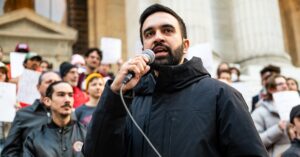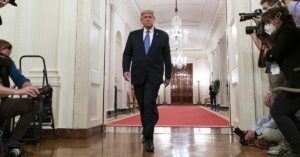State Of Unrest: Newsom Confronts Trump Over Guard Deployment
California finds itself at the center of a legal and political confrontation as President Donald Trump’s decision to activate the National Guard in response to unrest in the state has met with a forceful challenge from Governor Gavin Newsom.
Governor Newsom has branded the decision as illegal and vowed to pursue legal action against the President.
The situation arose when President Trump decided to deploy the National Guard in California, a move driven by the aim to protect federal personnel amid protests and riots. In particular, the president cited concerns for the well-being of Immigration and Customs Enforcement (ICE) officers whose duties, he believed, were being compromised by the ongoing disturbances.
Newsom's strong opposition
Governor Newsom did not take this federal intervention lightly. He has labeled Trump's decision as illegal and declared his intent to sue, challenging the authority to activate the National Guard without state approval. Newsom has openly criticized the president, accusing him of exacerbating the situation on the ground.
Trump's authority in this instance emerged from invoking 10 U.S.C. 12406, a statute that permits federalizing the National Guard in cases of rebellion. However, Trump's proclamation was notably vague, lacking specific mention of California or Los Angeles County.
Upon signing the order, Trump moved to deploy 2,000 National Guard troops, instructing Secretary of Defense Pete Hegseth to manage the logistics associated with this mobilization. This decision is somewhat unorthodox, given that state governors typically support National Guard deployments within their domains.
Democratic governors united in criticism
The response from Governor Newsom was not an isolated one. In a rare display of unity, all Democratic governors issued a collective statement, characterizing Trump's directive as an alarming misapplication of presidential power. Such a broad-based opposition highlights the gravity of the situation.
Despite Trump's intentions being grounded in federal law, Attorney Brad Moss points out the complexities involved. He indicated that the legal rationale was sufficiently broad, creating uncertainty on how courts might adjudicate challenges.
Moss explained, "It's unclear how the court would resolve legal challenges here," suggesting that the situation may well head to judicial determination as Newsom and other governors prepare for legal battles.
Local authorities versus federal intentions
Governor Newsom maintains that the protests and riots were being effectively managed by state and local police forces, and that Trump's intervention was unnecessary. He contends that the presence of the National Guard, rather than pacifying, may have intensified tensions locally, with instances of unlawful assemblies, vandalism, and looting being observed prominently in Los Angeles.
Unrest specifically around an immigrant detention center in Los Angeles County underscores the contested nature of the National Guard's deployment. It seems the president’s decision to federalize the Guard here aims to address these pockets of heightened tension, but without addressing the deep-rooted concerns articulated by the governor and local enforcement agencies.
Newsom stated, "He flamed the fires and illegally acted," emphasizing his belief that Trump’s order not only concerns California but could set a precedent allowing similar federal actions in any state without appropriate consent from its leaders.
Clarifications on the National Guard's role
In the midst of this conflict, U.S. Northern Command confirmed the deployment of 300 soldiers from the California Army National Guard to help safeguard federal personnel in Los Angeles County. This deployment reflects the federal government’s prioritization of ICE officers' safety amid the chaos.
The operational control of the Guard typically lies under a dual authority system, shared between governors and the president. However, the possibility of federalizing them during scenarios deemed a rebellion is not without precedent, albeit rarely done without state agreement.
How this standoff between federal prerogative and state autonomy unfolds could define the nature of federal-state relations when dealing with internal crises moving forward. The legal proceedings promised by Newsom and supported by other Democratic leaders could reshape how National Guard activations are treated in contentious instances like this one.




